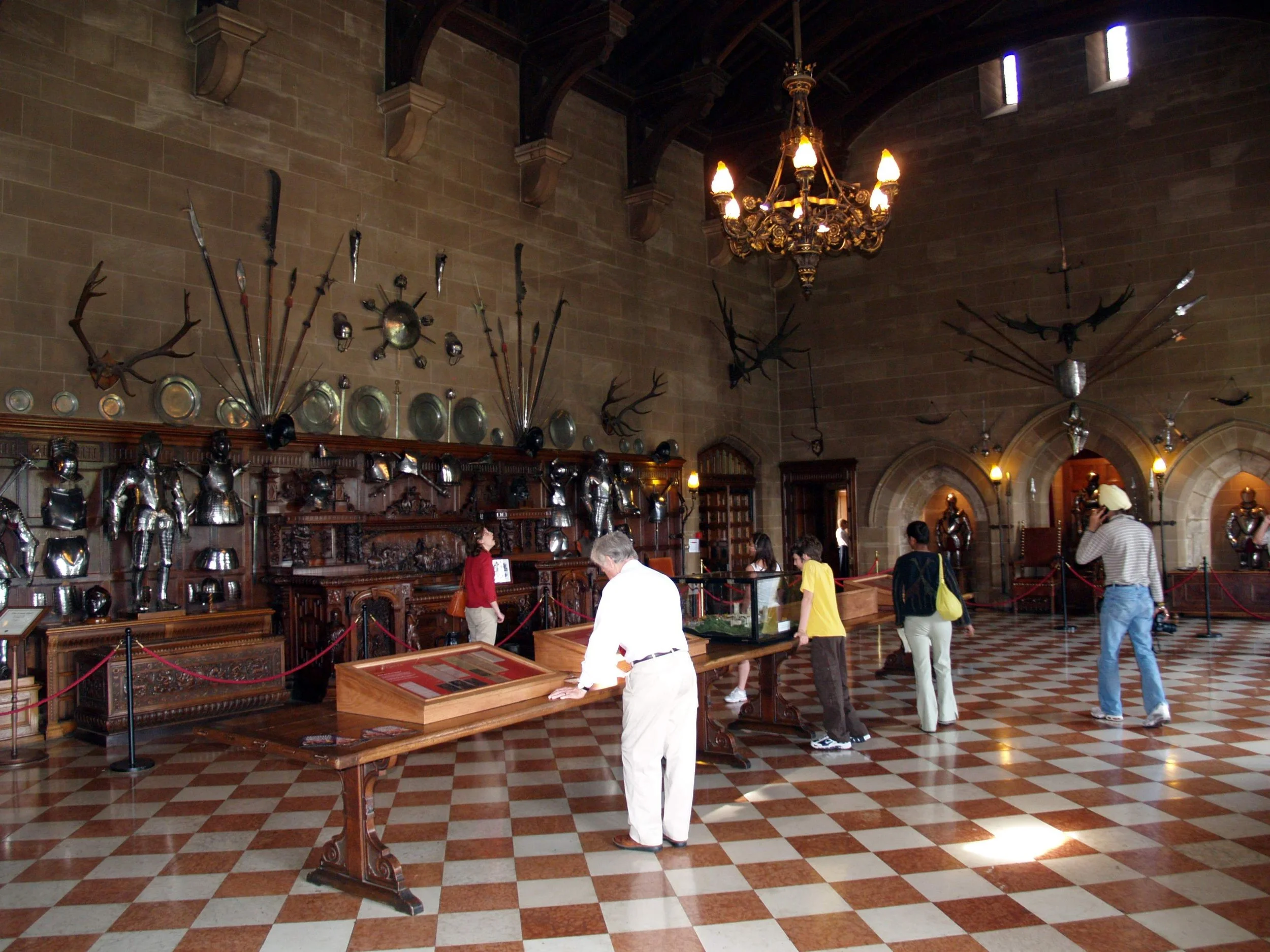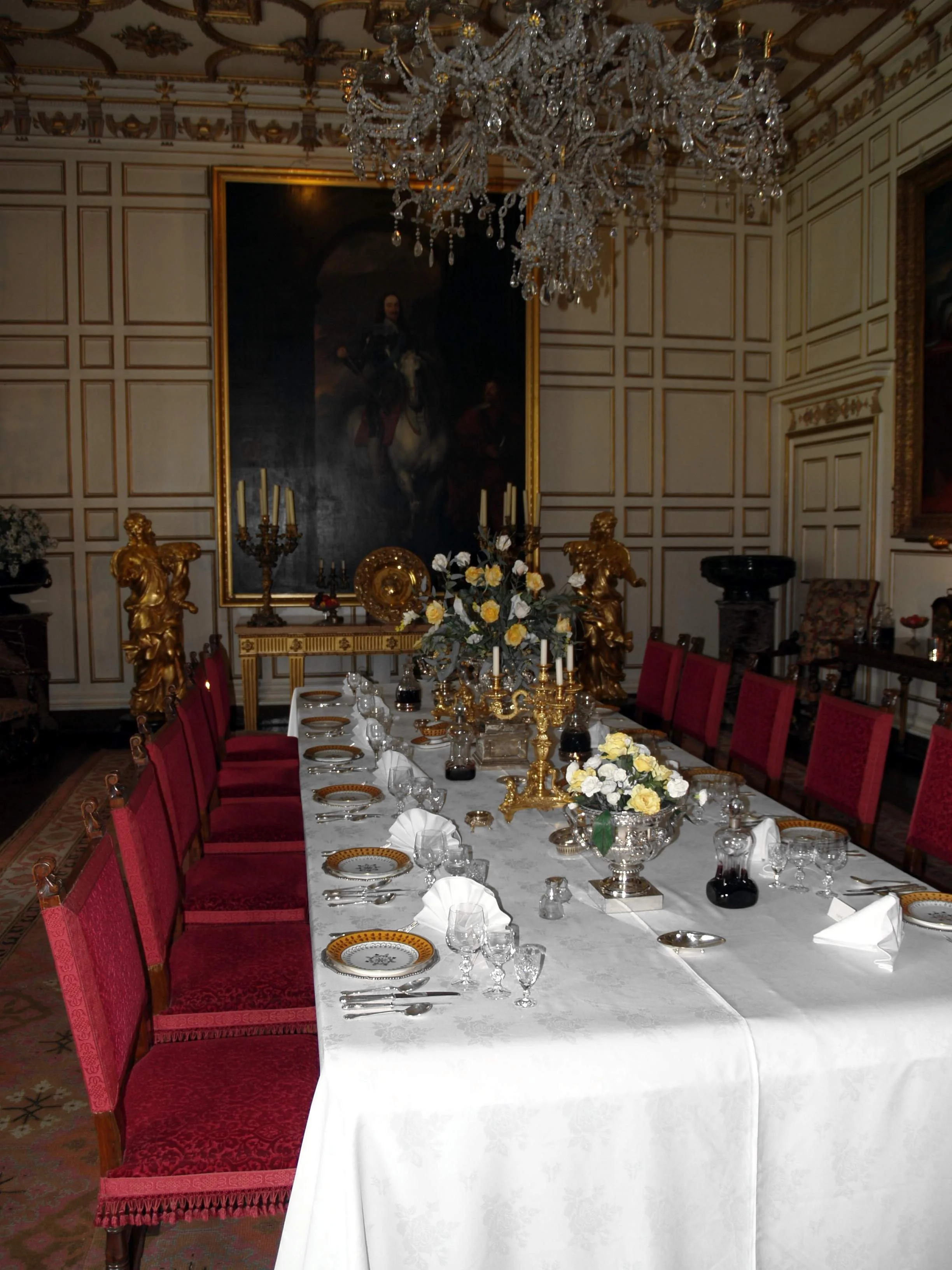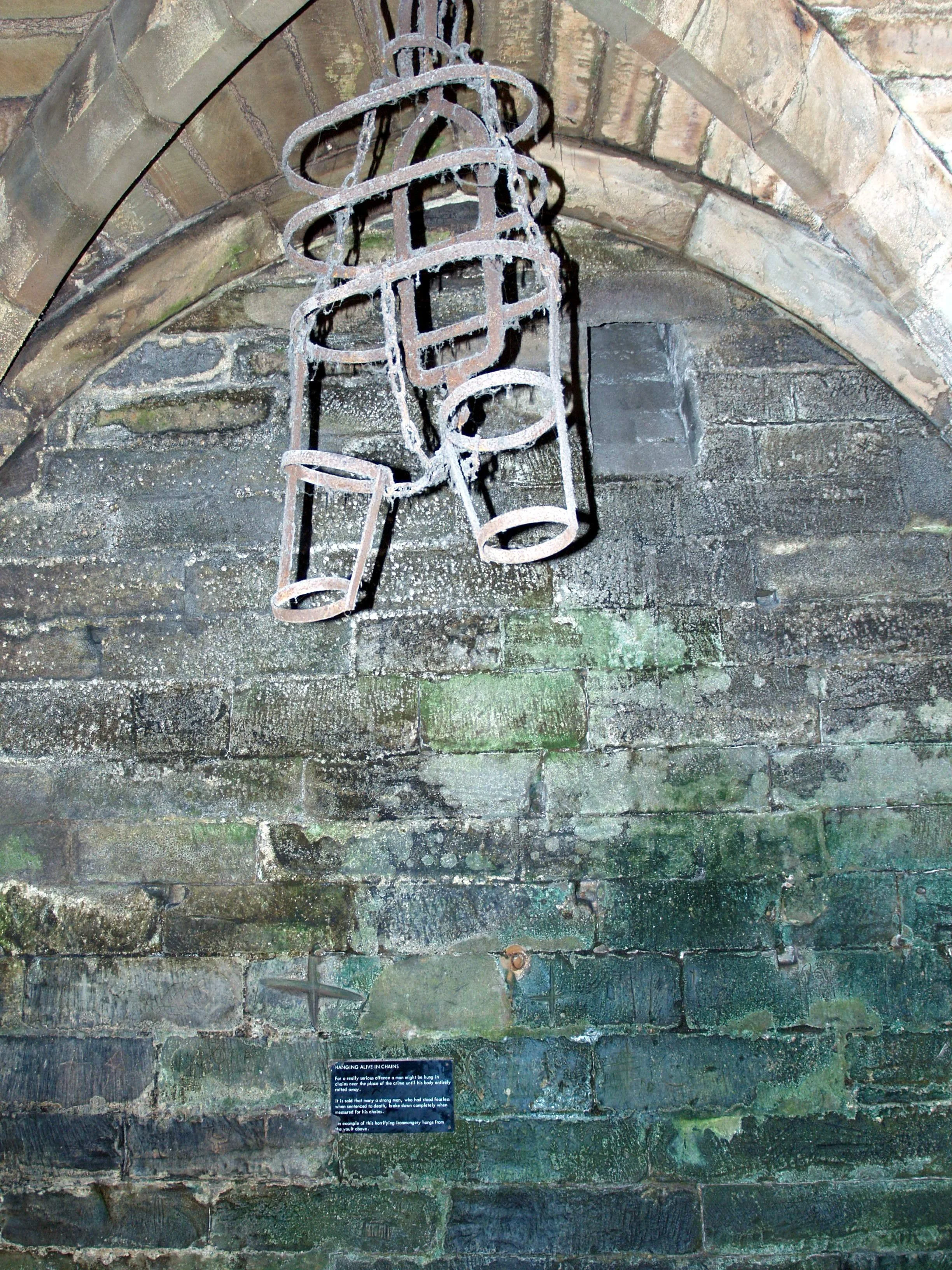United Kingdom. Warwick Castle and a Connecticut Yankee in King Arthur’s Court
Warwick Castle is touristy but worthy of a visit by those who appreciate Norman and Gothic architecture, 12th century weapons, and stories written by Mark Twain. The castle is located on a sandstone bluff above the River Avon in Warwickshire, a county within England’s West Midlands. The Romans were first to build on the site, constructing a motte or low concave hill. A bailey (enclosed courtyard) and keep (tower) were subsequently built on the motte. In 914 an Anglo-Saxon burh (fortified settlement) was constructed by King Alfred’s great granddaughter as a defense against Danish invaders. In 1068, following the Norman conquest of England, William the Conqueror constructed a wooden fort there. This building was replaced with a stone structure during the reign of King Henry II (1154-89).
In 1264 the castle was captured in a surprise attack by Simon de Montfort, the Earl of Leicester. The castle was expanded and remodeled during the 14th century with the addition of a gatehouse flanked by towers. In the summer of 1469, Richard Neville, Earl of Warwick (aka the “Kingmaker”), imprisoned King Edward IV in Warwick Castle. Subsequently, public protests led to the king’s release. Queen Elizabeth I visited the castle in 1566 during a nation-wide tour. The castle continued to be used as a stronghold until the early 17th century.
In 1601, King James I gifted it to poet and statesman Sir Fulke Greville to serve as a country residence. The castle’s Watergate Tower is said to be haunted by the ghost of Greville who was murdered by a servant. Loyalist forces lay siege to the castle in 1642 during the English Civil War (1642-1646) and in 1871 the castle was damaged by a fire that destroyed the Great Hall and apartments. With increasing tourist interest, a ticket office was opened in 1900. The castle is at the center of Mark Twain’s book, A Connecticut Yankee in King Arthur’s Court (1899). The book’s narrator describes meeting an American engineer at Warwick Castle who tells a story about hitting his head and waking up in the age of King Arthur. The castle stayed in the family of the Earl of Warwick until 1967 when Lord Brook, the son of the 7th Earl of Warwick, sold it to an entertainment company. Today, about a half million people visit Warwick Castle every year.
From London we took the M40 northwest through Longbridge and then followed the A429 north to the City of Warwick. The drive took about an hour and forty minutes. After purchasing tickets, we entered at the gatehouse located near the castle’s northwest corner. The royal apartments and Great Hall, Red Room, Cedar Room, and Drawing Room are all positioned on the castle’s east side and adjacent to the River Avon. The castle’s oval-shaped curtain wall surrounds an inner courtyard. Along the curtain wall are several towers including Guy’s on the north side, twin towers called Clarnce and Bear on the west, and Northern Tower on the southwest corner.
We walked the length of Great Hall which is decorated with portraits, weapons, antlers, helmets, and suits of armor. Featuring large window bays, the room is twelve meters high, nineteen meters long, and fourteen meters wide. In several places throughout the castle are wax figures representing historic persons. Given the absence of a historical connection, I was confused by a display with wax figures of King Henry the VIII and his six wives. Elsewhere the stories being represented made more sense such as the Countess of Warwick and others attending an 1898 dinner party in honor of the Prince of Wales. Among the attendees is a young Winston Churchill.
Below Ceasar’s Tower is a dungeon. Hanging near the top is a gibbet that was used to elevate prisoners that were held in a metal frame. Underneath the dungeon’s main area is a room called an oubliette that housed prisoners sentenced to death or deemed especially dangerous. Prisoners were lowered into the oubliette through a narrow trap door. Staircases provided access to ramparts along the curtain wall that connected Guy’s and Caesar’s Towers. From the castle wall we could see the town of Warwick and Warwick Cathedral, its most prominent building. Outside the castle are 26 hectares of gardens and open spaces used for jousting, trebuchet demonstrations, and other activities.






